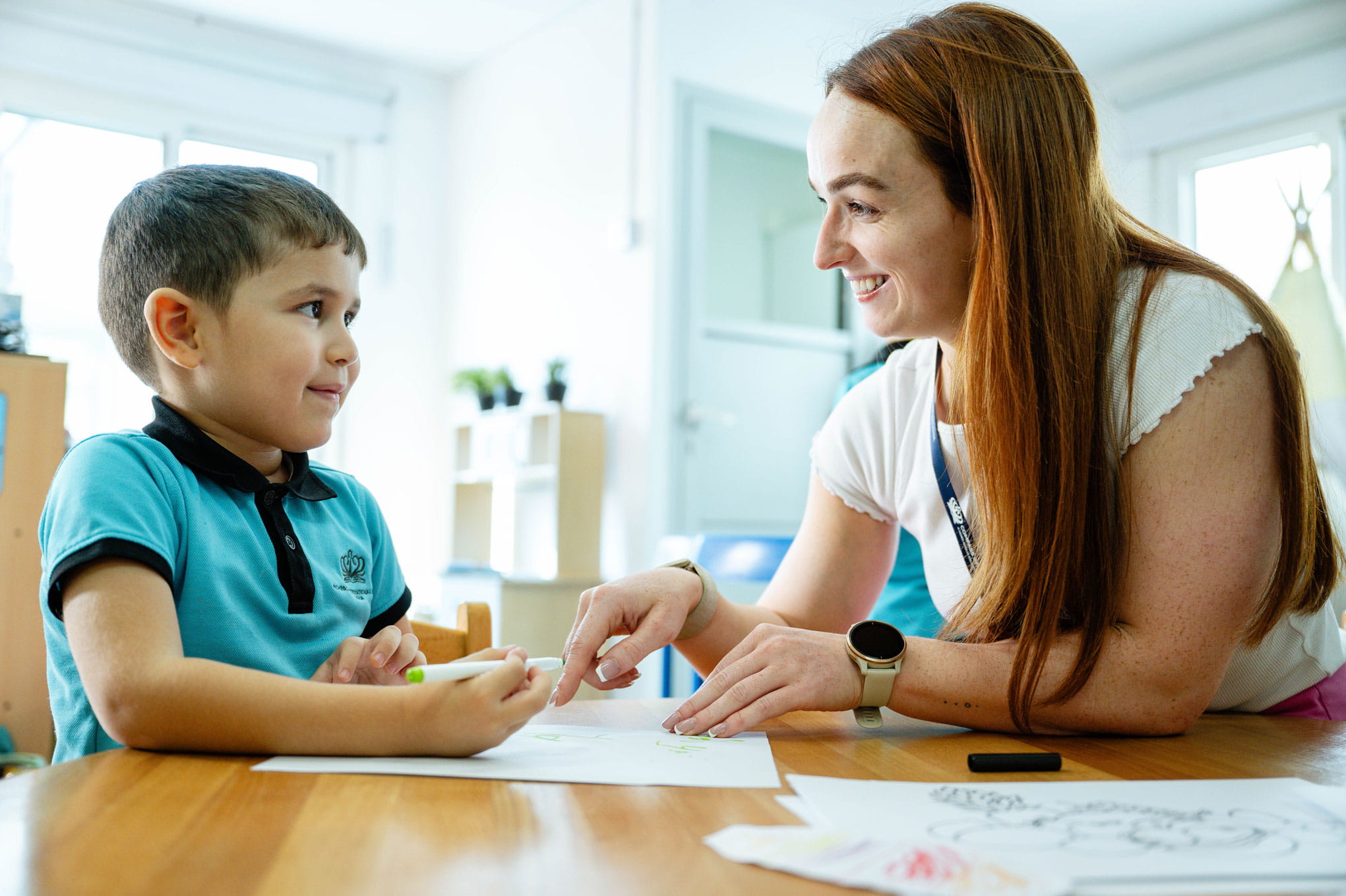What Is Sensory Play?
Sensory play includes any play that engages one or more of a child's senses. From touching and feeling objects to smelling and tasting them, children instinctively use their senses to navigate and understand the world around them.This innate curiosity begins from the moment they're born, as they eagerly explore their surroundings, often through playful experimentation. Whether it's making funny noises, spinning in circles or banging on pots and pans, each sensory experience contributes to the intricate wiring of their developing brains. Through sensory play, children learn about their environment and build vital neural connections that support their growth and development.

Neurodiversity and Sensory Play
Neurodiversity encompasses a beautiful spectrum of individuals, each with their unique ways of experiencing the world. The rich neural pathways formed through sensory play facilitate learning and growth in all children, regardless of their neurotype. What makes sensory play truly remarkable is its adaptability. It can cater to the needs of children with sensory processing difficulties, offering them a space to explore and interact with their environment in comfortable and fulfilling ways. Sensory activities can be adapted for different ages, needs and abilities. Moreover, sensory play transcends the constraints of structured activities, inviting children to explore. It's a world where there are no right or wrong answers, only endless possibilities waiting to be discovered. Sensory play celebrates the diversity of neurological experiences, offering every child a platform to thrive and grow, one sensory adventure at a time.
What are our Sensory Systems?
There are eight sensory systems.
- Visual input (sight): Our eyes are our windows to the world. They take in rays of light that create tiny pictures on the back of our eyeballs. These signals are then interpreted by our brain and tell us what we are looking at, allowing us to perceive the world around us.
- Gustatory input (taste): Our taste buds, located in the mouth, tongue and throat, react to the flavours, textures and temperatures of food and beverages. They enable us to distinguish between five specific tastes: salty, sweet, bitter, sour and umami (savoury). Activities such as blindfolded taste tests, where children sample various foods or drinks and guess their flavours, can engage their sense of taste during play.
- Tactile input (touch): Our tactile system plays a vital role in interpreting sensations such as pressure, texture, temperature and pain. It enables us to differentiate between light and firm touches, as well as various textures ranging from dry to wet and messy. When we touch different objects, our bodies transmit signals through neural pathways to our brain and other body parts, allowing us to comprehend the sensations we're experiencing. Additionally, our tactile system is also associated with bonding and relationships. Tactile play is fundamental to children's exploration of the world and contributes to their sense of security and well-being.
- Hearing input (auditory): Our auditory system allows us to receive sounds through our ears, helping us differentiate between important sounds and everyday background noise. It also assists in determining the source, proximity and familiarity of sounds. Listening to music, conversations and various other sounds engages both our ears and brains. During play, children have the opportunity to listen and process the sounds of other children playing, musical toys and play equipment, developing the ability to sort through multiple sounds and interpret them.
- Olfactory input (smell): Our olfactory system, nestled within the nose, is responsible for detecting various odours in our surroundings. It transmits this information through nerves to the brain, where smell is intricately intertwined with emotion and memory, often evoking powerful reactions. Children instinctively learn to distinguish between pleasant and unpleasant scents. During sensory play, the olfactory system can be actively engaged, whether through indoor activities like exploring scented stickers or outdoor experiences such as smelling flowers and trees.
- Vestibular input (balance): Receptors situated in the inner ear are responsible for vestibular input, which is triggered by any change in the position, direction, or movement of the head. This input plays a crucial role in various aspects of our physical coordination and awareness, including body positioning in space, posture, muscle tone, visual field stability, bilateral coordination and gravitational awareness. Children who experience challenges with their vestibular sense may exhibit frequent stumbling, unintentional page tearing, overly strong hugs, or difficulty in regulating motion and movement. During activities like walking along a balance beam or rope bridge, children learn to use their bodies to maintain stability.
- Proprioceptive input (movement): This system is in our muscles, tendons, ligaments and joint receptors, providing us with awareness of our body's position in space and the ability to sense and regulate force and pressure. It contributes to our sense of grounding and spatial orientation, enabling us to navigate our surroundings with ease. Physical play almost always engages a child's proprioceptive system, allowing them to become more attuned to their body's movements through activities like jumping, crawling, sliding, pulling, pushing, or stretching.
- Interoceptive input (internal): Sometimes called the hidden sense, the interoceptive system gives us the ability to feel what is happening inside our body. It plays a role in influencing emotions and a sense of well-being and detects changes in our internal state. These include hunger and fullness, thirst, body temperature, heart and breathing rates, social touch, muscle tension, itch, nausea, sleepiness and more.
Benefits of Sensory Play
Sensory stimulation and play-based learning will help all children, regardless of age, developmental stage, or learning style. Children who have a diversity of sensory experiences learn to use their senses in new ways.
Language skills
Sensory play serves as a powerful catalyst for language development in young children. Regardless of the type of play, sensory included, they immerse themselves in experiences, learning diverse ways to express emotions, desires and needs. By actively engaging their senses, children gradually develop the ability to articulate their actions and sensations using descriptive language. They may use words like smooth, rough, sticky and soft to describe the different textures they are feeling.
Gross motor skills
Most sensory activities also include a component of physical activity, which is essential for helping children develop their gross motor skills. As children crawl, jump, kick, climb and run while interacting with things like stairs, balls and playground equipment, they develop the large muscles in their arms, feet, legs and torsos. Whether children are just learning to walk or have been trying to throw a ball, the key is to allow them plenty of time to practice those skills freely.
Fine motor skills
During sensory play, children use their hands and fingers to manipulate and explore different materials, such as squeezing, pinching and rolling play dough or pouring and scooping water or sand. These actions require precision and control, which helps children improve their hand-eye coordination and dexterity. Sensory play can also help children develop the muscles in their hands and fingers and coordinate movements, which are essential for activities such as writing, drawing and using utensils.
Cognitive growth
One of the main benefits of sensory play is that it encourages children to use their senses to explore their environment and discover new things. Asking questions, thinking about how things work, doing experiments and analysing results are all part of healthy cognitive growth. When children interact with a wide assortment of materials and open-ended activities, they have many opportunities to make predictions, solve problems, make decisions and compare the results against their original predictions. Sensory play also enhances memory and attention span.
Creativity and imagination
Sensory play is a fantastic way to boost creativity and imagination in young children. The freedom to experiment with different sensory inputs inspires imaginative play and self-expression. Sensory experiences can stimulate children's creative thinking, allowing them to think outside the box and envision new possibilities creating their own unique experiences. When children have fun using their imaginations and feel good about the outcomes, their self-esteem grows, making it even easier to explore their creativity the next time.
Self-Regulation
One of the key benefits of sensory play is its capacity to foster self-regulation. Sensory play can be used to help regulate children’s overall arousal level and it can be used to stimulate a child who might be a little sluggish. On the other end, sensory play can help a child who might have hyperactivity or trouble paying attention. The pressure from hugs, weighted lap pads and sensory seats can help soothe and signal that it’s time to stay in place. Most kids enjoy the soothing experience of sensory play when they can engage their senses in a way they enjoy.
Social interaction
Children often work in small groups or side-by-side during sensory play, which helps them learn to communicate, share and get along together. Sensory play is something that everyone can engage in and it’s very inclusive. These types of situations also help children gain empathy and guide them to see situations from another child’s point of view, which leads to enhanced mindfulness.
Exploring Sensory Play at our Gharaffa campus
At Compass International School, we understand the profound impact of sensory play on children’s development. We embrace and integrate sensory-rich experiences into our curriculum, recognising them as essential components of holistic education. By engaging children's senses in playful and exploratory activities, we lay the foundation for crucial cognitive, motor and social skills essential for their growth and learning.
This year at our Gharaffa campus, we have installed sensory play corners and sensory boards both indoors and outdoors, including music boards where children can experiment with different sounds, tactile boards with various textures, double-sided sequin boards for drawing and a caterpillar board featuring an array of tactile experiences. The children have shown significant benefits from these additions, including improved self-regulation, increased focus and enhanced concentration. Additonally, we have seen improvements in auditory discrimination, creative expression, fine motor skills and sensory integration. These sensory experiences are not just activities; they are vital tools that help our students thrive in a nurturing and stimulating environment.
Our approach empowers children to unlock their full potential and navigate the world with curiosity, confidence and joy.

Muthupon Vairam
Head of Additional Learning Needs (ALN)









